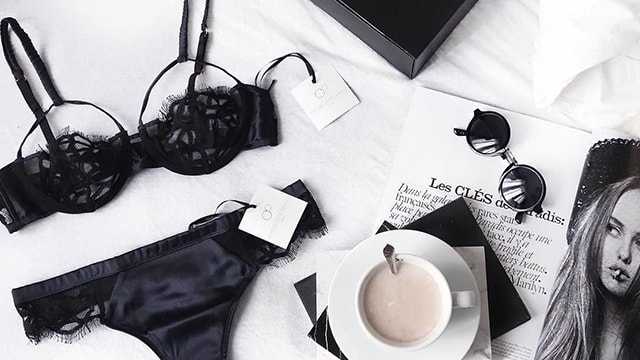
Growing at a steady rate over the past few years, the dependency of lingerie for functional as well as fashion purposes has propelled its growth further resulting in the global lingerie market being valued at US $ 33.18 billion in 2015, which is expected to be worth US $ 55.83 billion by the end of 2024. The global market is estimated to rise at a CAGR of 6.4 per cent during the forecast period – 2016 to 2024, according to Transparency Market Research. With this growth, the lingerie market is seeing an overflow of niche brands, and Amazon is definitely not behind. The brand is preparing to launch its own private label, as the industry witnesses a major overhaul in the lingerie market, challenging leading international lingerie brands such as Victoria’s Secret.

On the basis of product types, the global lingerie market is segmented into bra, knickers and panties, loungewear, shapewear and others. Various research and reports indicate that the bra segment holds the biggest share in the global market due to its indispensable usage, while the knickers and panties segment too is expected to make a significant contribution to the overall market as these are considered essential items as well. As per market research company Just Style, the world lingerie retail market is now valued at US $ 28.75 billion, while Europe accounts for US $ 11.67 billion of the total figure, and North America for US $ 7.93 billion. Together they have a combined share of 66.3 per cent of the world’s total. The ‘Global Market Review of Lingerie – Forecasts to 2022’ also estimates that the world bra market for 2016 is worth US $ 16.42 billion, as bras account for 55.5 per cent of the world lingerie market. In unit terms, bra sales account for 1596 million units per year. While the world briefs’ market is estimated to be at US $ 9.90 billion, representing 33.5 per cent of the total lingerie market, in unit terms, briefs sales constitute 5,260 million units per year.

This notable progress is propelling niche lingerie brands to grow as against the existing giants such as Victoria’s Secret, making room in the market for other small players. One such brand is Aerie, the American Eagle Outfitter’s lingerie and activewear brand, which has been performing strongly for the past several quarters despite weak mall traffic and a soft macro-environment. The company’s game-changing campaign was in 2014, when the lingerie brand decided to feature only un-airbrushed models in its ads, which truly worked for the company! Its sales increased immensely thereafter (20 per cent growth in 2015), and is currently showing no signs of slowing down. As an extension to its #AerieReal campaign, the company in April revealed its #AerieMan campaign. This marks its pledge to forego retouching even male models in their underwear and swimwear products, beginning Holiday 2016 (23 per cent growth in 2016). With growing internet penetration, a consistent customer shift from store to online shopping and the increased usage of smartphones and tablets, the company is led to shrink its store count and focus more on e-commerce channel.
Meanwhile, the market major Victoria’s Secret, which still dominates the lingerie segment, worth at least US $ 1 billion in US alone, is struggling to gain momentum. The retailer sales is seeing a slump, decreasing at 13 per cent in March, year-over-year, as the company continues to feel the impact of discontinuing its non-athletic apparel and swimwear ranges in 2016. Experts believe that while many retailers are catering to the millennials, Victoria’s Secret being one of them, millennials are against logos, which Victoria’s Secret resonates with. Also, Victoria’s Secret product images on the website are not a representation of an average woman, resulting in millennials opting for other lingerie brands. The brand has also received flak for its ‘Perfect Body’ campaign, whose impact was so negative that the retailer had to pull out the campaign.
This gap in the market and a curiosity to tap the potential of millennials has provided room for niche brands to grow in the lingerie segment such as Lively, Naja, Negative Underwear and Third Love who are promoting their products by providing an inclusive, female-centric identity that’s more about the wearer and less about who might be looking at her. Also, these brands are offering a wider collection of nude shades, hoping to serve various ethnicities and aiming to undercut competitors on pricing through direct to consumer distribution. While mass market brands such as Aerie and Madewell which had launched intimates in February are doing well, Phillips Van Heusen acquired True & Co., a vertically integrated online brand that’s known for its fit, which launched in March. More recently, Amazon’s announcement of entering the market with a private label brand, with its own line called Iris & Lilly, is creating a storm in the market. It has been already launched in the UK with limited assortment of sizes and colours. With its widespread reach of supplier network, Amazon can negotiate for the lowest prices, which is rightfully evident as the company’s cost of a bra is as low as US $ 8 in comparison to Targets US $ 15 and Victoria’s Secret average of US $ 40.
In fact, online stores are continuing to dominate the global lingerie market, offering convenience, varieties and a wide range of offers, discounts and coupons to its consumers. The growing penetration of internet, mobile internet specifically among the millennials, is expected to further drive the e-commerce segment. With the help of accurate size charts and description, lingerie can be purchased through online shopping with an easy option of exchange or return. Hence, industry experts believe that all these factors enable the creation of a broad product range which suits every budget and lures a bigger consumer base in the global lingerie market. New entrants to the market offering products at low cost and the convenience of online shopping, are seen booming in the ongoing lingerie market, which was earlier dominated just by major players.

Post a Comment